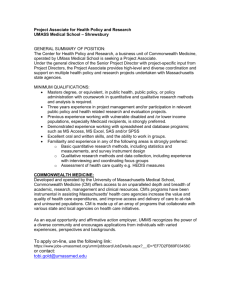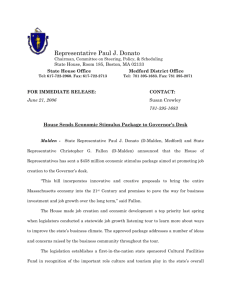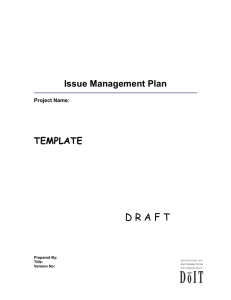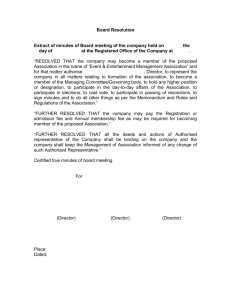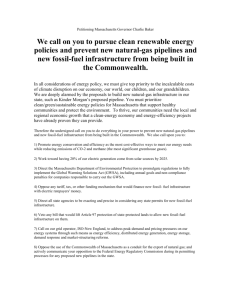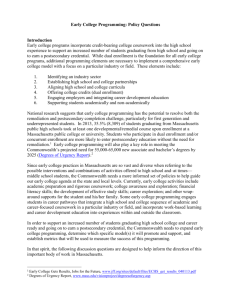Project Issue Management Plan
advertisement
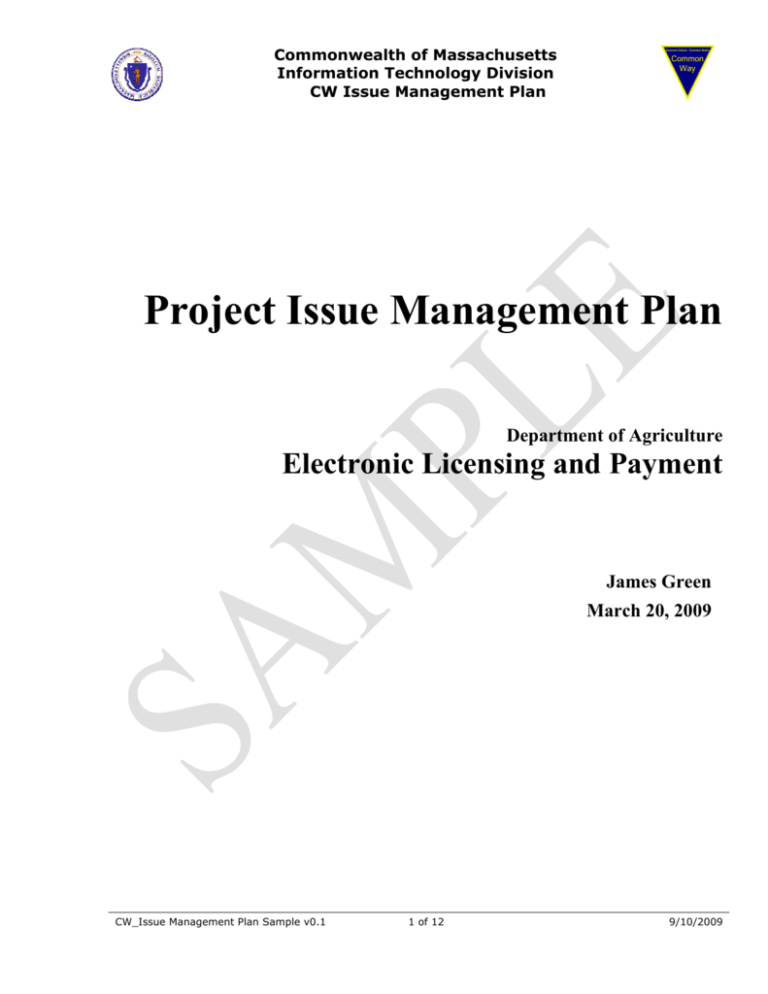
Commonwealth of Massachusetts Information Technology Division CW Issue Management Plan Common Values - Common Goals Common Way Project Issue Management Plan Department of Agriculture Electronic Licensing and Payment James Green March 20, 2009 CW_Issue Management Plan Sample v0.1 1 of 12 9/10/2009 Commonwealth of Massachusetts Information Technology Division CW Issue Management Plan Common Values - Common Goals Common Way Version History The following is the document control for revisions to this document. Date 03/20/2009 Version 1.0 CW_Issue Management Plan Sample v0.1 Author James Green Change & Section Initial Draft 2 of 12 9/10/2009 Commonwealth of Massachusetts Information Technology Division CW Issue Management Plan Common Values - Common Goals Common Way Table of Contents 1 Issue Management Categories and Rules ....................................................................................... 6 1.1 Categories and Rules.......................................................................................................................... 6 2 Issue Management Process............................................................................................................... 8 2.1 2.2 Process Description............................................................................................................................ 8 Process Diagram .............................................................................................................................. 10 3 Issue Management Roles ................................................................................................................ 11 3.1 Roles and Responsibilities ............................................................................................................... 11 4 Issue Tracking Tools....................................................................................................................... 12 4.1 Issue Log.......................................................................................................................................... 12 5 Authorization................................................................................................................................... 12 CW_Issue Management Plan Sample v0.1 3 of 12 9/10/2009 Commonwealth of Massachusetts Information Technology Division CW Issue Management Plan Common Values - Common Goals Common Way Purpose: Issue Management is the process for identification, analysis, resolution, reporting, and escalation of the program’s issues. The process will enable a project to create strategies to effectively address potential barriers to success. An issue is a major problem, opportunity, dispute, concern, situation, or something to be decided that will impede the progress or successful completion of the project and requires immediate resolution. An issue management plan defines activities and business rules to manage and control issues that arise during the project. Risk and Issues are not the same. Because risks are future events that you can assume or anticipate in a project, they require different types of assessment and management. Because issues are things that have already occurred, they must be acknowledged and dealt with immediately. Once identified and implemented, resolutions to any issue have the potential to impact the project’s scope, schedule, quality, or cost. The Issue Management process will bring visibility to issues, accountability as to how they are acted upon, and their timely resolution. Analysis of the issue will provide data and understanding for a more informed decision. Recording and reviewing issues will prevent the team from forgetting about issues that could adversely impact the project. A project that proceeds without exercising an Issue Management Plan is likely to experience team and client discord, scope creep, and negative schedule impacts. Effective project management always requires the proactive and timely identification of issues and seeks to resolve these issues expeditiously. All team members should be vigilant to raise issues, particularly in their areas of expertise and specific responsibility, when they become aware of them. This Issue Management Plan is designed to: outline the recommended approach for identifying issues and tracking the progress, documentation, and resolution of those issues facilitate attention to key issues impacting the program ensure all stakeholders are informed and, if applicable, participate in the resolution create an audit trail of discussions and resolutions of program issues Issues should be: questions or problems that span departments, resource teams, or groups (both internal and external) design questions that will take several days to resolve or that won’t be addressed until a later phase of the project but need to be documented any question or problem relating to scope, schedule, budget, quality, design, or development for which resolutions are required proactively discovered throughout the project life cycle and phases Issues should NOT be: questions/suggestions for other team members that might be resolved quickly tasks that are already listed in the work plan and scheduled to be completed anything that should be documented elsewhere (meeting minutes, tasks, etc) CW_Issue Management Plan Sample v0.1 4 of 12 9/10/2009 Commonwealth of Massachusetts Information Technology Division CW Issue Management Plan Common Values - Common Goals Common Way Guidelines: All sections must be complete for all projects, regardless of project level or complexity. Document Filling Instructions: Fill the information in the text boxes and tables. Template instructions in the document are noted in italics. If desired, all italicized instructions can be deleted when the document is finalized. The document Title and Author can be updated in the document properties by clicking on “File” and then “Properties” on the menu bar. In the Summary tab, enter the document title and author. Do not leave any section blank. If a section is not applicable, then type “Not Applicable” in that section The cells in the table may be filled in by clicking in the corresponding row/column and typing. To add additional rows to the table, TAB after placing the cursor in the last row and last column. [Text enclosed in quotes and displayed in red such as "Tab to add rows" should be deleted before saving the document] When inserting an image, such as a workflow or chart: 1) only insert the image in the appropriate text box, 2) save the image as a Word document; and, 3) insert the image as a file. [To insert an image as a file: 1) from the menu bar, select “Insert”, 2) select “File”, 3) select the Word file document; and, 4) click “Insert.”] After finishing the document, please re-generate the complete Table of Contents to reflect the correct page numbering. (Select the Table of contents; right-click; select “update fields” and select “update page numbers only” command). CW_Issue Management Plan Sample v0.1 5 of 12 9/10/2009 Commonwealth of Massachusetts Information Technology Division CW Issue Management Plan Common Values - Common Goals Common Way 1 Issue Management Categories and Rules 1.1 Categories and Rules Describe what rules, procedures, and categories the team must follow when logging, managing and assessing issues, including how priorities and status will be assigned, how issues will be escalated, and when change management will be initiated. The project will use the following categories and rules to manage issues: Priority Categories Issues will be categorized into three levels of importance (Urgent, High, Medium, and Low) based on their impact to the project goals, objectives, scope, schedule, and budget. Use the following guidelines to prioritize the issue: Urgent – “The project cannot move forward until this issue is resolved” High – “The project will not be able to move forward if this issue is not resolved by the due date” Medium – “The issue may prevent the project from moving forward in the near future” Low – “This issue is not preventing the project from moving forward” Status Categories Issues will be maintained in the Issue Log and will follow predefined statuses. The issue status should only be modified by the Project Manager after consultation with the assigned Owner. Use the following guidelines to assign a status to the issue: Open – the initial status assigned when a new issue has been identified and added to the log; typically, this status is used when an owner has not been assigned or the work has not yet started In Process – an owner has been assigned and has started working on the issue Resolved – the owner has identified a solution to the issue and has taken corrective action to resolve Reopened – an issue was previously categorized Resolved, Deferred, or Closed but has been identified again as a continuing issue Deferred – the project manager, owner, and issue CW_Issue Management Plan Sample v0.1 6 of 12 9/10/2009 Commonwealth of Massachusetts Information Technology Division CW Issue Management Plan Escalation Rules Common Values - Common Goals Common Way submitter have decided to postpone addressing the issue to a later time Closed – the project manager and issue submitter have validated and accepted the resolution and no longer considers the issue open Issues will be escalated to the Project Steering Committee or the Executive Sponsor for review and final resolution based on their priority level and potential impact to the project. The following criteria will be used in escalating issues to the Project Steering Committee all high priority issues that are past their target completion dates issues which are beyond the authority of an individual project and require a consensus decision Owner of the issue is not clear or cannot be established inability to secure the resources needed to resolve the issue issues which are not being properly addressed and may impede the progress of the project all issues that impact the project scope, budget, and schedule Monitoring Frequency Change Management Rules CW_Issue Management Plan Sample v0.1 The following criteria will be used in escalating issues to the Project Executive Sponsors: issues that could materially impact the project objectives, scope, budget, and schedule Issues will be reviewed with the project team on a weekly basis at the project status meeting. If time does not allow reviewing all issues, the following criteria will be used to determine which issues are reviewed at the weekly meetings: All Urgent and High priority issues All issues that are past their Target Completion Date All Issues that have Target Completion Dates within the next month All remaining issues The Commonway Change Management process must be 7 of 12 9/10/2009 Commonwealth of Massachusetts Information Technology Division CW Issue Management Plan Issue Category Common Values - Common Goals Common Way initiated if a resolution to an issue is determined to impact the project scope, schedule, budget, or quality. Issues in the log will be grouped into the following Categories to facilitate review and reporting: Requirements Design Development QA / Testing Training Implementation Architecture / Network Infrastructure Resources Project Management Communications 2 Issue Management Process 2.1 Process Description Provide an overview of the general process and procedures for managing issues within the project. Identify how issues will be documented, communicated, reviewed, and escalated. For each issue identified during project execution, the following process will be used: Identification – Any member of the project team may identify a potential issue. Any identified issue must be communicated to the Project Manager at the earliest opportunity, preferably in written form. A full description of the issue and the name of the team member must be conveyed. Prioritization – The Project Manager will apply prioritization and categorization rules to the issue. Tracking – The Project Manager will record and track the issue in the Issue Log, assign the issue a unique ID number, and capture all necessary information. Escalation (when required) – If escalation rules are satisfied, the Project Manager will escalate the issue immediately to the appropriate parties based on the project’s governance structure (first to the Project Steering Committee and then to the Sponsor and/or Executive Committee). The Sponsor and Executive Committee are the final point of escalation and must make a decision to resolve the issue. Once the issue is resolved, the Sponsor or member of the Executive CW_Issue Management Plan Sample v0.1 8 of 12 9/10/2009 Commonwealth of Massachusetts Information Technology Division CW Issue Management Plan Common Values - Common Goals Common Way Committee will communicate the resolution to the Project Manager. Assignment for Resolution – Consulting with the appropriate resources and stakeholders, the Project Manager will assign a specific Owner responsible for resolving the issue. The Project Manager and Owner will assign an appropriate Target Completion Date for resolution. Issue Monitoring – The Owner will provide periodic updates of the progress of resolving the issue to the Project Manager. The Project Manager will track and record the status, progress, and resolution of issues and escalate issues when escalation rules are satisfied. The Project Manager will continue to monitoring the issue until it is closed. Communication – Issue statuses will be reviewed in weekly project team meetings and updates will be documented in the Issues Log. Escalation decision makers will be notified at the earliest opportunity when an escalation occurs. An issue summary, including any issues resolved in the period since the last report, will be communicated to the project team, stakeholders and customers in the weekly project status report and monthly project dashboard, as appropriate. Closing – The Project Manager will verify that the solution was approved, record the action taken which resolved the issue and update the issue status to “Closed” in the log. CW_Issue Management Plan Sample v0.1 9 of 12 9/10/2009 Commonwealth of Massachusetts Information Technology Division CW Issue Management Plan Common Values - Common Goals Common Way 2.2 Process Diagram Provide a diagrammatic representation of the processes and procedures to be followed in order to initiate, evaluate, review, and resolve issues within the project. CW_Issue Management Plan Sample v0.1 10 of 12 9/10/2009 Commonwealth of Massachusetts Information Technology Division CW Issue Management Plan Common Values - Common Goals Common Way 3 Issue Management Roles 3.1 Roles and Responsibilities Define the roles and responsibilities for all identified resources (both internal and external to the project) involved with the identification, review and resolution of project issues. For decision makers, note any special expertise that may be required given the types of issue you can anticipate. This sets the stage for ensuring access to that expertise. The Project Team Members are responsible for: identifying any issues within or without their area of expertise documenting the issue as clearly and completely as possible reporting the issue to the Project Manager as soon as possible The Project Manager is responsible for: assessing and recording any identified issue establishing initial priority, owner, and target completion date for the issue establishing priority of issues and defining target dates monitoring the status of issue resolution following up with owners and other resources as necessary to facilitate solutions to issues which are in jeopardy of missing target dates escalating issues as required by the escalation rules communicating issue status to the project team, submitter, owner, and others reporting issue management activity according to communications plan maintaining data in the issue tracking log closing out issues when resolved and completed The Owner is responsible for: identifying and obtaining commitment from resources needed to resolve issue working with resources to resolve issue escalating issues as required by the escalation rules approving resolutions The Project Steering Committee and Executive Sponsor (Sally Wheat) are responsible for: resolving and providing guidance to resolve issues escalated to them approving resolutions for escalated issues supporting implementation of resolutions for escalated issues, including those that are crossfunctional or controversial CW_Issue Management Plan Sample v0.1 11 of 12 9/10/2009 Commonwealth of Massachusetts Information Technology Division CW Issue Management Plan Common Values - Common Goals Common Way 4 Issue Tracking Tools 4.1 Issue Log Describe the purpose and usage of the "Issue Log". Provide the location to the Issue Log that will be used for this project. If you are using issue tracking software, note that here. Purpose: The Issues Log is designed to provide a mechanism for capturing, organizing, maintaining, and tracking the resolution of issues. Usage of the Issues Log will ensure that issues are managed and addressed promptly in order to prevent or minimize any negative impact on the project. The Project Manager will be responsible for all additions, updates, and maintenance to the log. The Issues Log for the Electronic Licensing and Payment Project can be found in the following folder on the Department of Agriculture network: F:\ENV001\DAR\Projects\eLicensing\4 Execution & Control\IssuesLog.xls The Project Team may consider moving all issue tracking for this project to the Clarity software application if and when it becomes available to the Department of Agriculture. 5 Authorization Secure approvals either hard copy or email depending upon governance structure. Name Sally Wheat CW_Issue Management Plan Sample v0.1 Project Role Sponsor Date 3/30/2009 12 of 12 9/10/2009
